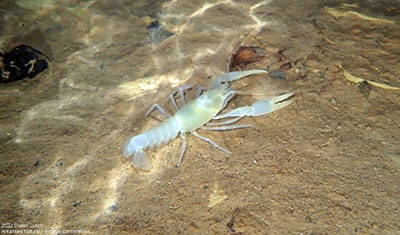By Cindy Osborne
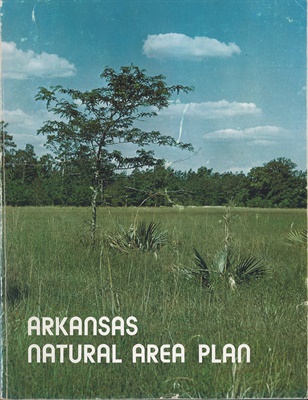 When most people think of the work of the Arkansas Natural Heritage Commission (ANHC), the images that come to mind are those of botanists scouring rugged mountainsides for rare plants, or biologists snorkeling clear headwater streams in search of electric-colored fish, or stewardship staff donned in protective gear restoring fire through a prescribed burn to a prairie landscape. These are all vital components of the agency’s work yet don’t tell the full story. Much of the work of the agency takes place in a more mundane setting at desks behind a wall of computer screens. The foundation of the agency is its information. It is the basis upon which all decisions are made, ranging from which areas to acquire, to what species to study, to how to sustain a natural community.
When most people think of the work of the Arkansas Natural Heritage Commission (ANHC), the images that come to mind are those of botanists scouring rugged mountainsides for rare plants, or biologists snorkeling clear headwater streams in search of electric-colored fish, or stewardship staff donned in protective gear restoring fire through a prescribed burn to a prairie landscape. These are all vital components of the agency’s work yet don’t tell the full story. Much of the work of the agency takes place in a more mundane setting at desks behind a wall of computer screens. The foundation of the agency is its information. It is the basis upon which all decisions are made, ranging from which areas to acquire, to what species to study, to how to sustain a natural community.
Even in the agency’s infancy, it sought to base decisions on science, building on the work initiated in “Arkansas Natural Area Plan,” (cover is pictured) a document meant to serve as the initial handbook for protecting natural areas. Although “The Natural Area Plan” offered a solid start, it was a static document that the agency would soon outgrow. To face an ever-evolving and changing world, the agency would need a dynamic system to identify and prioritize those areas in greatest need of conservation. In 1978 the agency partnered with The Nature Conservancy (TNC) to establish the Arkansas Natural Heritage Inventory Program.
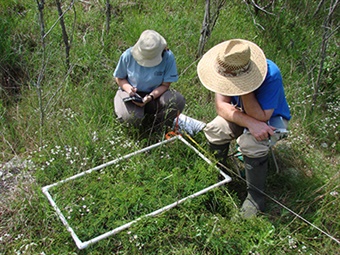 The goal of the Heritage Program was to identify and protect those plants, animals and natural communities that represented important components of the state’s biological diversity but were in danger of vanishing from the landscape. To document the state’s biota, program scientists coordinated with other state and federal agencies, academic institutions, museums and herbaria; they gleaned information from scientific journals and reports. From their research, they developed lists of the state’s rare plants, animals and natural community types and began compiling known locations into a standardized computer database. Staff conducted field inventories to document the locations and conditions of these “elements” of biological diversity. The methodology used in Arkansas was also being used in a growing network of heritage programs across the U.S. and eventually into Canada and central America.
The goal of the Heritage Program was to identify and protect those plants, animals and natural communities that represented important components of the state’s biological diversity but were in danger of vanishing from the landscape. To document the state’s biota, program scientists coordinated with other state and federal agencies, academic institutions, museums and herbaria; they gleaned information from scientific journals and reports. From their research, they developed lists of the state’s rare plants, animals and natural community types and began compiling known locations into a standardized computer database. Staff conducted field inventories to document the locations and conditions of these “elements” of biological diversity. The methodology used in Arkansas was also being used in a growing network of heritage programs across the U.S. and eventually into Canada and central America.
 In the late 1970s, TNC actively worked to establish heritage programs in each state. The core structure and mission of each program was the same, but where and how it was supported varied from state to state. Today a heritage program may be part of a state’s fish and wildlife agency or parks department, found within a university system, or be funded by a private conservation organization. TNC gave birth to the network and served as its hub until 1999 when the network reorganized, and a new organization emerged to take over the role of the network nucleus. This new entity would become known as NatureServe.
In the late 1970s, TNC actively worked to establish heritage programs in each state. The core structure and mission of each program was the same, but where and how it was supported varied from state to state. Today a heritage program may be part of a state’s fish and wildlife agency or parks department, found within a university system, or be funded by a private conservation organization. TNC gave birth to the network and served as its hub until 1999 when the network reorganized, and a new organization emerged to take over the role of the network nucleus. This new entity would become known as NatureServe.
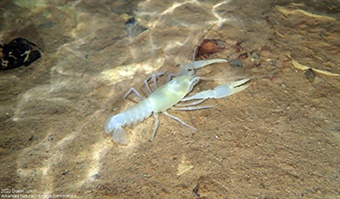 Although each state’s program maintains its independence, conforming to the specific needs of its situation, it works with NatureServe to develop and maintain continuity in the collection and interpretation of data, sharing achievements and knowledge. One of the most useful tools developed by the network is a system of conservation ranking. The key components of this system are the application of state and global conservation ranks to elements of diversity (national ranks are also used, but less often). The state rank addresses the rarity of an element within the political boundaries of the state. The global rank addresses the rarity of the element range-wide. The system is numeric (1 to 5), with 1 indicating imperilment and 5 implying security. The combination of the state and global ranks helps to prioritize conservation efforts. For example, a very rare species, such as a cave crayfish found in only one or two locations, would receive a combined rank of G1, S1. Whereas a cave salamander that was relatively widespread globally, but rare in the state might receive a combined rank of G3, S1. In very simple terms, this would give highest protection priority to locations supporting the rare crayfish.
Although each state’s program maintains its independence, conforming to the specific needs of its situation, it works with NatureServe to develop and maintain continuity in the collection and interpretation of data, sharing achievements and knowledge. One of the most useful tools developed by the network is a system of conservation ranking. The key components of this system are the application of state and global conservation ranks to elements of diversity (national ranks are also used, but less often). The state rank addresses the rarity of an element within the political boundaries of the state. The global rank addresses the rarity of the element range-wide. The system is numeric (1 to 5), with 1 indicating imperilment and 5 implying security. The combination of the state and global ranks helps to prioritize conservation efforts. For example, a very rare species, such as a cave crayfish found in only one or two locations, would receive a combined rank of G1, S1. Whereas a cave salamander that was relatively widespread globally, but rare in the state might receive a combined rank of G3, S1. In very simple terms, this would give highest protection priority to locations supporting the rare crayfish.
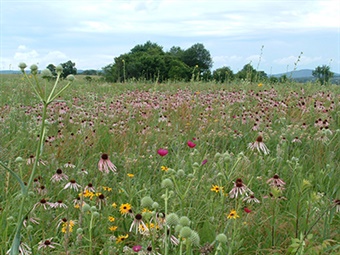 The primary reason ANHC adopted the heritage program was to help in its efforts to identify what areas should be acquired for protection in its System of Natural Areas. Currently, nearly 22,000 locations that support or have supported rare elements are documented in the agency’s data system. The database is a key way for the agency to extend protection of sensitive elements beyond land acquisition and is used in the agency’s environmental review program. It has also become an important resource for other government agencies and the private sector. Since 1990, when the agency began maintaining electronic records for reviews and requests, the agency has handled approximately 25,000 environmental review projects and requests for database information. The scope of these requests has grown exponentially in recent years as timber companies seek to produce lumber in a more sustainable way and as the energy sector expands into wind and solar power.
The primary reason ANHC adopted the heritage program was to help in its efforts to identify what areas should be acquired for protection in its System of Natural Areas. Currently, nearly 22,000 locations that support or have supported rare elements are documented in the agency’s data system. The database is a key way for the agency to extend protection of sensitive elements beyond land acquisition and is used in the agency’s environmental review program. It has also become an important resource for other government agencies and the private sector. Since 1990, when the agency began maintaining electronic records for reviews and requests, the agency has handled approximately 25,000 environmental review projects and requests for database information. The scope of these requests has grown exponentially in recent years as timber companies seek to produce lumber in a more sustainable way and as the energy sector expands into wind and solar power.
The Research Section staff makes up the Arkansas Heritage Program:
Theo Witsell – Chief of Research and Inventory
Dustin Lynch – Aquatic Ecologist
Ben Benton – Botanist
Kevin Krajcir – Grants Coordinator
Cindy Osborne – Data Manager/Environmental Review Coordinator
Katie Shannon – Environmental Review Specialist
Scotty Winningham – Conservation Data Specialist
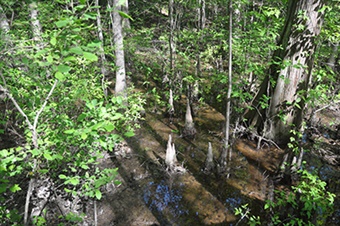 Although the titles may vary, each member of the Research Section staff is a dedicated biologist with a passion for the natural world and its conservation. The data management staff of the research section (Cindy Osborne, Katie Shannon and Scotty Winningham) are likely the least visible of those biologists and the ones routinely behind the wall of computer monitors. They are specifically responsible for getting information into and out of the data system. Their days are spent examining aerial imagery, sleuthing obscure data sources, checking records for accuracy, updating taxonomy and responding to a seemingly endless stream of data requests and environmental review projects. Their work is obscure, but their peculiar talents help to preserve the deep caverns supporting rare blind cavefish, the soggy bogs where beautiful orchids bloom, the spectacular prairies blazing with spring color and the serene swamps with towering cypress trees that make up the Arkansas System of Natural Areas.
Although the titles may vary, each member of the Research Section staff is a dedicated biologist with a passion for the natural world and its conservation. The data management staff of the research section (Cindy Osborne, Katie Shannon and Scotty Winningham) are likely the least visible of those biologists and the ones routinely behind the wall of computer monitors. They are specifically responsible for getting information into and out of the data system. Their days are spent examining aerial imagery, sleuthing obscure data sources, checking records for accuracy, updating taxonomy and responding to a seemingly endless stream of data requests and environmental review projects. Their work is obscure, but their peculiar talents help to preserve the deep caverns supporting rare blind cavefish, the soggy bogs where beautiful orchids bloom, the spectacular prairies blazing with spring color and the serene swamps with towering cypress trees that make up the Arkansas System of Natural Areas.
Photos:
Photo 1 — Cover of 1974 "Arkansas Natural Area Plan."
Photo 2 — ANHC staff conducting a plant survey. Photo ANHC staff.
Photo 3 — Taken circa 1985, staff working with maps and data in the ANHC office.
Photo 4 — Hell Creek Cave Crayfish, a species of greatest conservation concern. Photo by Dustin Lynch.
Photo 5 — Baker Prairie Natural Area, photo by Bill Holimon.
Photo 6 — Lorance Creek Natural Area, photo by Ruthie Berryhill.
 When most people think of the work of the Arkansas Natural Heritage Commission (ANHC), the images that come to mind are those of botanists scouring rugged mountainsides for rare plants, or biologists snorkeling clear headwater streams in search of electric-colored fish, or stewardship staff donned in protective gear restoring fire through a prescribed burn to a prairie landscape. These are all vital components of the agency’s work yet don’t tell the full story. Much of the work of the agency takes place in a more mundane setting at desks behind a wall of computer screens. The foundation of the agency is its information. It is the basis upon which all decisions are made, ranging from which areas to acquire, to what species to study, to how to sustain a natural community.
When most people think of the work of the Arkansas Natural Heritage Commission (ANHC), the images that come to mind are those of botanists scouring rugged mountainsides for rare plants, or biologists snorkeling clear headwater streams in search of electric-colored fish, or stewardship staff donned in protective gear restoring fire through a prescribed burn to a prairie landscape. These are all vital components of the agency’s work yet don’t tell the full story. Much of the work of the agency takes place in a more mundane setting at desks behind a wall of computer screens. The foundation of the agency is its information. It is the basis upon which all decisions are made, ranging from which areas to acquire, to what species to study, to how to sustain a natural community. Even in the agency’s infancy, it sought to base decisions on science, building on the work initiated in “Arkansas Natural Area Plan,” (cover is pictured) a document meant to serve as the initial handbook for protecting natural areas. Although “The Natural Area Plan” offered a solid start, it was a static document that the agency would soon outgrow. To face an ever-evolving and changing world, the agency would need a dynamic system to identify and prioritize those areas in greatest need of conservation. In 1978 the agency partnered with The Nature Conservancy (TNC) to establish the Arkansas Natural Heritage Inventory Program.
 The goal of the Heritage Program was to identify and protect those plants, animals and natural communities that represented important components of the state’s biological diversity but were in danger of vanishing from the landscape. To document the state’s biota, program scientists coordinated with other state and federal agencies, academic institutions, museums and herbaria; they gleaned information from scientific journals and reports. From their research, they developed lists of the state’s rare plants, animals and natural community types and began compiling known locations into a standardized computer database. Staff conducted field inventories to document the locations and conditions of these “elements” of biological diversity. The methodology used in Arkansas was also being used in a growing network of heritage programs across the U.S. and eventually into Canada and central America.
The goal of the Heritage Program was to identify and protect those plants, animals and natural communities that represented important components of the state’s biological diversity but were in danger of vanishing from the landscape. To document the state’s biota, program scientists coordinated with other state and federal agencies, academic institutions, museums and herbaria; they gleaned information from scientific journals and reports. From their research, they developed lists of the state’s rare plants, animals and natural community types and began compiling known locations into a standardized computer database. Staff conducted field inventories to document the locations and conditions of these “elements” of biological diversity. The methodology used in Arkansas was also being used in a growing network of heritage programs across the U.S. and eventually into Canada and central America. In the late 1970s, TNC actively worked to establish heritage programs in each state. The core structure and mission of each program was the same, but where and how it was supported varied from state to state. Today a heritage program may be part of a state’s fish and wildlife agency or parks department, found within a university system, or be funded by a private conservation organization. TNC gave birth to the network and served as its hub until 1999 when the network reorganized, and a new organization emerged to take over the role of the network nucleus. This new entity would become known as NatureServe.
In the late 1970s, TNC actively worked to establish heritage programs in each state. The core structure and mission of each program was the same, but where and how it was supported varied from state to state. Today a heritage program may be part of a state’s fish and wildlife agency or parks department, found within a university system, or be funded by a private conservation organization. TNC gave birth to the network and served as its hub until 1999 when the network reorganized, and a new organization emerged to take over the role of the network nucleus. This new entity would become known as NatureServe.  Although each state’s program maintains its independence, conforming to the specific needs of its situation, it works with NatureServe to develop and maintain continuity in the collection and interpretation of data, sharing achievements and knowledge. One of the most useful tools developed by the network is a system of conservation ranking. The key components of this system are the application of state and global conservation ranks to elements of diversity (national ranks are also used, but less often). The state rank addresses the rarity of an element within the political boundaries of the state. The global rank addresses the rarity of the element range-wide. The system is numeric (1 to 5), with 1 indicating imperilment and 5 implying security. The combination of the state and global ranks helps to prioritize conservation efforts. For example, a very rare species, such as a cave crayfish found in only one or two locations, would receive a combined rank of G1, S1. Whereas a cave salamander that was relatively widespread globally, but rare in the state might receive a combined rank of G3, S1. In very simple terms, this would give highest protection priority to locations supporting the rare crayfish.
Although each state’s program maintains its independence, conforming to the specific needs of its situation, it works with NatureServe to develop and maintain continuity in the collection and interpretation of data, sharing achievements and knowledge. One of the most useful tools developed by the network is a system of conservation ranking. The key components of this system are the application of state and global conservation ranks to elements of diversity (national ranks are also used, but less often). The state rank addresses the rarity of an element within the political boundaries of the state. The global rank addresses the rarity of the element range-wide. The system is numeric (1 to 5), with 1 indicating imperilment and 5 implying security. The combination of the state and global ranks helps to prioritize conservation efforts. For example, a very rare species, such as a cave crayfish found in only one or two locations, would receive a combined rank of G1, S1. Whereas a cave salamander that was relatively widespread globally, but rare in the state might receive a combined rank of G3, S1. In very simple terms, this would give highest protection priority to locations supporting the rare crayfish.  The primary reason ANHC adopted the heritage program was to help in its efforts to identify what areas should be acquired for protection in its System of Natural Areas. Currently, nearly 22,000 locations that support or have supported rare elements are documented in the agency’s data system. The database is a key way for the agency to extend protection of sensitive elements beyond land acquisition and is used in the agency’s environmental review program. It has also become an important resource for other government agencies and the private sector. Since 1990, when the agency began maintaining electronic records for reviews and requests, the agency has handled approximately 25,000 environmental review projects and requests for database information. The scope of these requests has grown exponentially in recent years as timber companies seek to produce lumber in a more sustainable way and as the energy sector expands into wind and solar power.
The primary reason ANHC adopted the heritage program was to help in its efforts to identify what areas should be acquired for protection in its System of Natural Areas. Currently, nearly 22,000 locations that support or have supported rare elements are documented in the agency’s data system. The database is a key way for the agency to extend protection of sensitive elements beyond land acquisition and is used in the agency’s environmental review program. It has also become an important resource for other government agencies and the private sector. Since 1990, when the agency began maintaining electronic records for reviews and requests, the agency has handled approximately 25,000 environmental review projects and requests for database information. The scope of these requests has grown exponentially in recent years as timber companies seek to produce lumber in a more sustainable way and as the energy sector expands into wind and solar power. The Research Section staff makes up the Arkansas Heritage Program:
Theo Witsell – Chief of Research and Inventory
Dustin Lynch – Aquatic Ecologist
Ben Benton – Botanist
Kevin Krajcir – Grants Coordinator
Cindy Osborne – Data Manager/Environmental Review Coordinator
Katie Shannon – Environmental Review Specialist
Scotty Winningham – Conservation Data Specialist
 Although the titles may vary, each member of the Research Section staff is a dedicated biologist with a passion for the natural world and its conservation. The data management staff of the research section (Cindy Osborne, Katie Shannon and Scotty Winningham) are likely the least visible of those biologists and the ones routinely behind the wall of computer monitors. They are specifically responsible for getting information into and out of the data system. Their days are spent examining aerial imagery, sleuthing obscure data sources, checking records for accuracy, updating taxonomy and responding to a seemingly endless stream of data requests and environmental review projects. Their work is obscure, but their peculiar talents help to preserve the deep caverns supporting rare blind cavefish, the soggy bogs where beautiful orchids bloom, the spectacular prairies blazing with spring color and the serene swamps with towering cypress trees that make up the Arkansas System of Natural Areas.
Although the titles may vary, each member of the Research Section staff is a dedicated biologist with a passion for the natural world and its conservation. The data management staff of the research section (Cindy Osborne, Katie Shannon and Scotty Winningham) are likely the least visible of those biologists and the ones routinely behind the wall of computer monitors. They are specifically responsible for getting information into and out of the data system. Their days are spent examining aerial imagery, sleuthing obscure data sources, checking records for accuracy, updating taxonomy and responding to a seemingly endless stream of data requests and environmental review projects. Their work is obscure, but their peculiar talents help to preserve the deep caverns supporting rare blind cavefish, the soggy bogs where beautiful orchids bloom, the spectacular prairies blazing with spring color and the serene swamps with towering cypress trees that make up the Arkansas System of Natural Areas.Photos:
Photo 1 — Cover of 1974 "Arkansas Natural Area Plan."
Photo 2 — ANHC staff conducting a plant survey. Photo ANHC staff.
Photo 3 — Taken circa 1985, staff working with maps and data in the ANHC office.
Photo 4 — Hell Creek Cave Crayfish, a species of greatest conservation concern. Photo by Dustin Lynch.
Photo 5 — Baker Prairie Natural Area, photo by Bill Holimon.
Photo 6 — Lorance Creek Natural Area, photo by Ruthie Berryhill.
